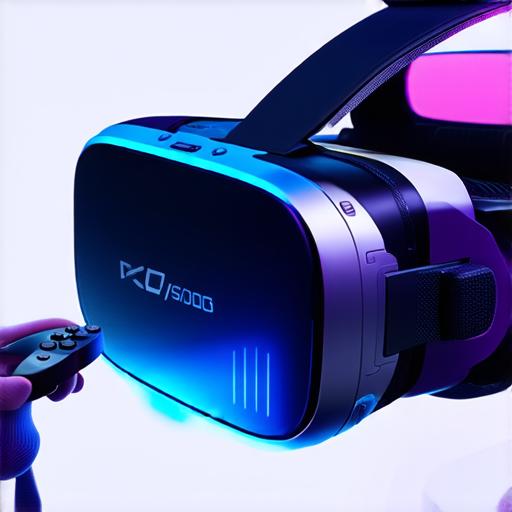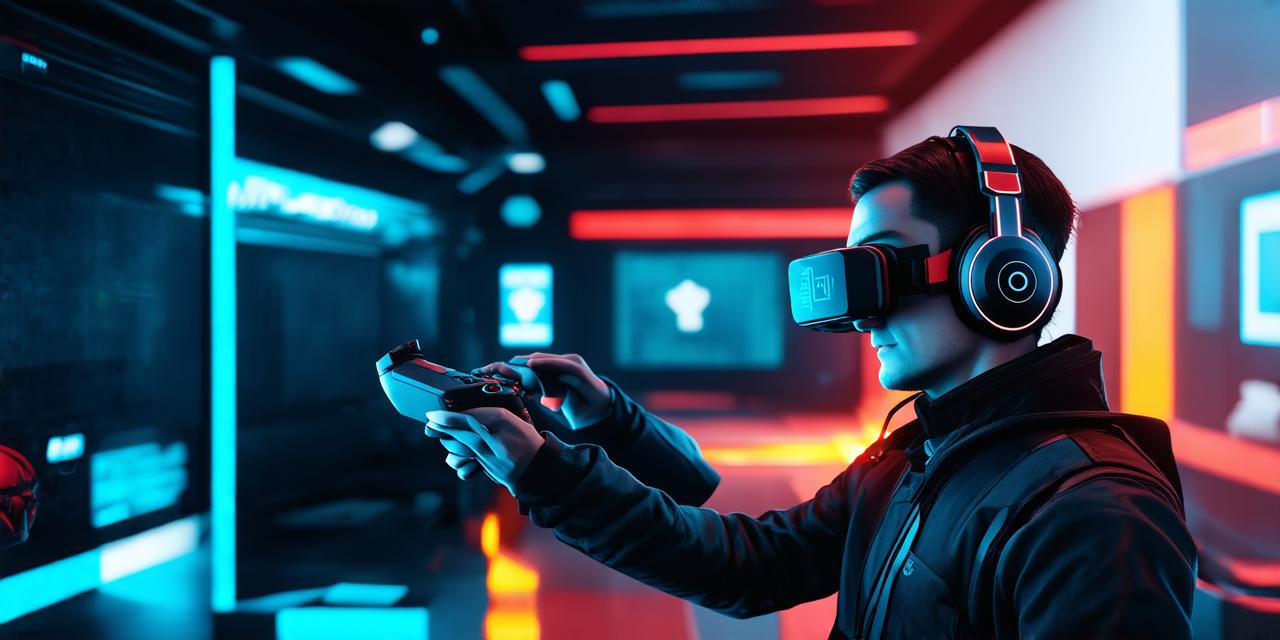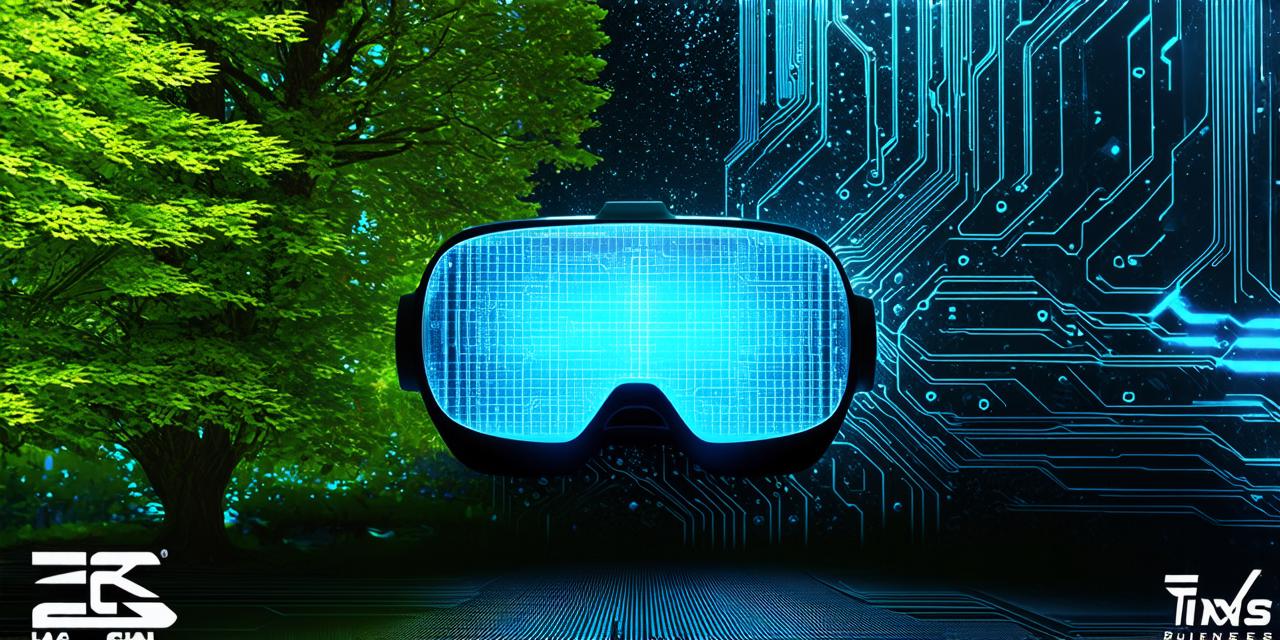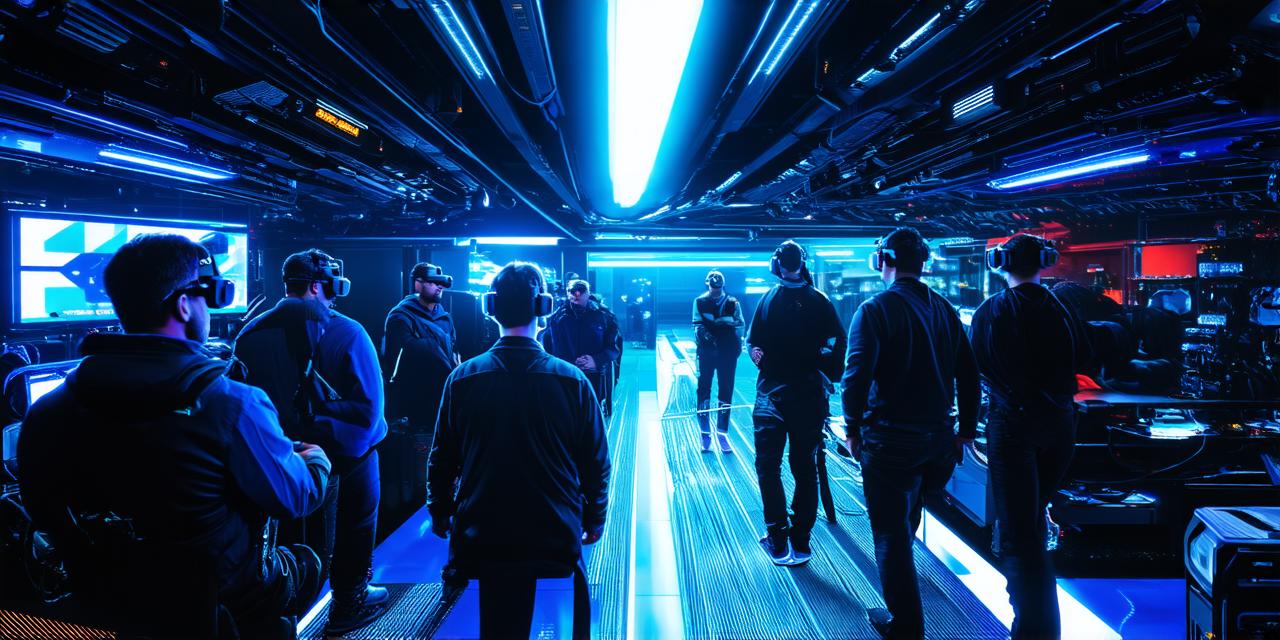Introduction to Virtual Reality Games
Virtual reality games are computer-generated experiences that allow users to interact with a simulated environment in real-time. The most common way to experience VR is through a head-mounted display (HMD) or headset, such as the Oculus Quest 2 or HTC Vive. These devices track the user’s movements and provide visual feedback that creates an immersive experience.
The Basics of Virtual Reality Technology
Virtual reality technology is built upon several key components:
- Sensors: VR headsets use a variety of sensors, such as accelerometers, gyroscopes, and magnetometers, to track the user’s movements. This data is then processed by the VR system to create a realistic representation of the user’s position and orientation in the virtual world.
- Graphics Processing Unit (GPU): The GPU is responsible for rendering the 3D graphics that make up the VR environment. It processes vast amounts of data in real-time, creating a seamless and immersive experience.
- Display: VR headsets typically use high-resolution displays to provide a realistic visual representation of the virtual world. Some headsets also support multiple displays, providing a wider field of view for more immersive experiences.
- Input Devices: VR games typically require input devices such as controllers or gloves to interact with the virtual environment. These devices track the user’s hand and finger movements, allowing them to perform actions in the game
- Motion Capture: Some VR games use motion capture technology to track the user’s body movements more accurately. This can create a more realistic representation of the user’s movements within the virtual world.
The Role of Software in Virtual Reality Games
Virtual reality games are software-driven experiences. The game developers must write code that interacts with the VR hardware and creates a seamless experience for the player. This includes programming the game logic, graphics, audio, and input handling.
Development Challenges of Virtual Reality Games
Virtual reality games present unique challenges for developers. Some of these challenges include:
- Motion Sickness: Motion sickness is a common issue when using VR headsets. Developers must take steps to minimize the effects of motion sickness, such as reducing frame rates or providing more stable visual feedback.
- Comfort and Ergonomics: VR headsets can be uncomfortable to wear for extended periods, leading to fatigue and discomfort. Developers must ensure that their games are designed with comfort and ergonomics in mind.
- Limited Resources: Virtual reality hardware is still relatively expensive and resource-intensive. Developers must optimize their code to reduce the game’s load on the system, ensuring smooth gameplay.
- Interactivity: VR games require a high level of interactivity, which can be challenging to achieve. Developers must ensure that their games provide intuitive controls and allow for natural interactions within the virtual world.
- Accessibility: Virtual reality technology is not yet accessible to everyone, and developers must consider accessibility issues when designing their games. This includes ensuring compatibility with different devices and providing alternative input methods for users with disabilities.
Virtual Reality Games in Education
Virtual reality games have the potential to revolutionize education by providing immersive learning experiences. VR games can bring abstract concepts to life, allowing students to explore and interact with complex ideas in a safe and engaging way. Some examples of VR games used in education include:
- Virtual Field Trips: Students can take virtual field trips to historical sites or natural wonders around the world, allowing them to experience different cultures and environments firsthand.
- Science Simulations: Students can use VR simulations to explore scientific concepts, such as the human body or the solar system. This allows them to gain a deeper understanding of complex ideas.
- Language Learning: VR games can be used to teach language skills by immersing students in virtual environments where they must interact with native speakers to communicate.
- History and Culture: VR games can bring history and culture to life, allowing students to explore different eras and cultures in a way that is both engaging and informative.
Virtual Reality Games in Mental Health
Virtual reality technology has been used for mental health therapy to treat various conditions, such as anxiety and depression. VR therapy allows patients to confront their fears in a controlled environment, which can lead to improved mental health outcomes. Some examples of VR games used in mental health include:
- Exposure Therapy: Patients with anxiety disorders can use VR simulations to confront their fears in a safe and controlled environment. This can help them overcome phobias and improve their quality of life.
- Mindfulness Meditation: VR games can be used to guide patients through mindfulness meditation exercises, which have been shown to reduce stress and anxiety levels.
- Pain Management: Patients with chronic pain can use VR games to distract themselves from pain and reduce the need for medication.
- Trauma Therapy: Patients with post-traumatic stress disorder (PTSD) can use VR simulations to reprocess traumatic experiences in a safe and controlled environment, which can help them overcome their symptoms.

Summary
Virtual reality games are a fascinating and exciting new way to experience technology. They offer endless possibilities for gaming, education, entertainment, and training. As the technology continues to evolve, we can expect virtual reality games to become even more immersive and engaging. With careful consideration of development challenges and accessibility issues, virtual reality games have the potential to revolutionize the way we interact with technology and improve our lives in countless ways.




